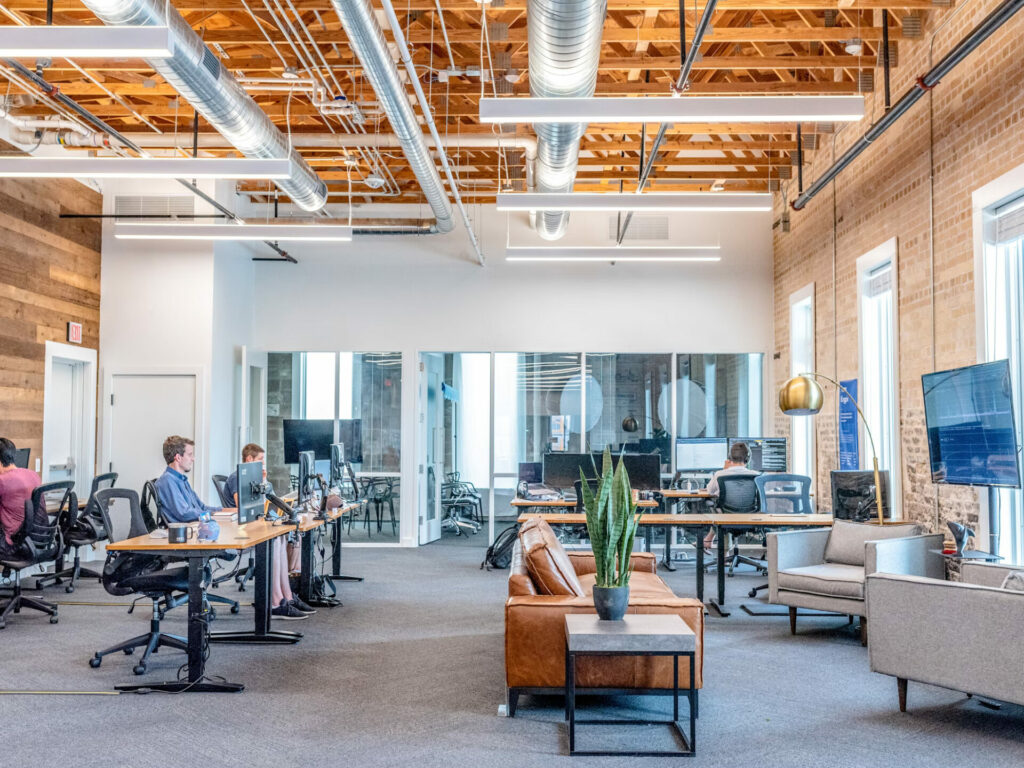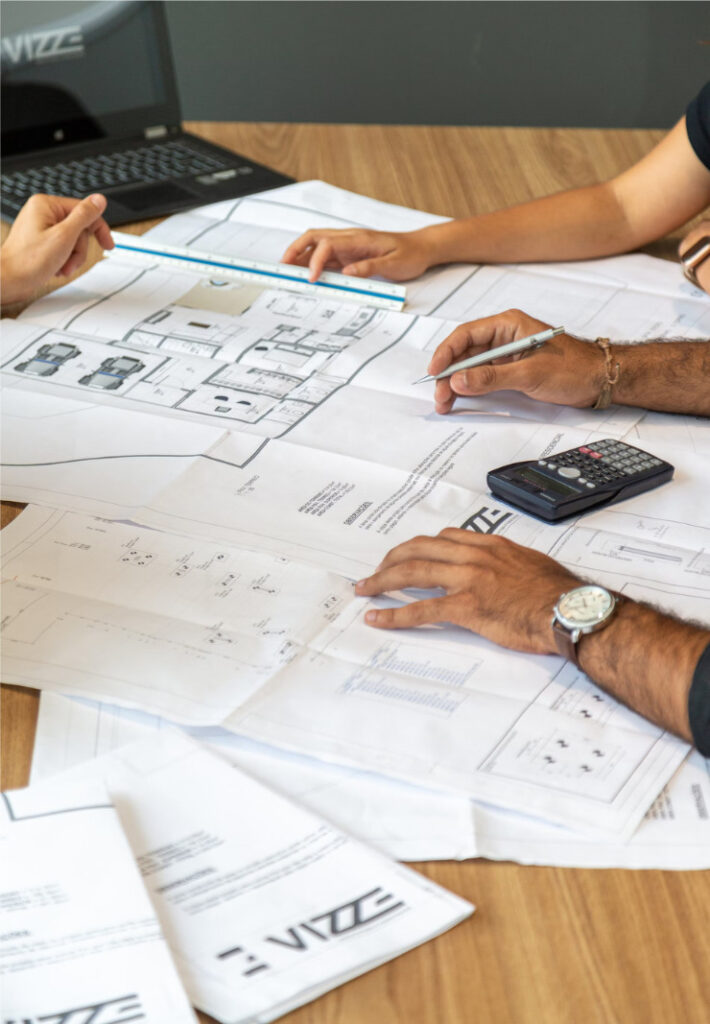
01 March 2021
What Is Office Refurbishment? A Complete Guide To Transforming Your Workspace for Success
Posted on March 1, 2021 by edenlondon. Last Updated on August 21, 2024
Deloitte recently published an article in which they reviewed their London Office Crane Survey (LOCS) and found there was a decided shift in the market towards office refurbishment over new builds. In fact, refurbishment volumes had climbed to record levels since they first started conducting these surveys in 2005. This despite the various disruptions, such as Covid, that have hit the industry.
Investigating this trend, Deloitte grouped reasons for office refurbishment into ‘push’ and ‘pull’ factors. The key ‘push’ factor is the Minimum Energy Efficiency Standards (MEES) as outlined by the UK government. This will come into force in 2030, and will ban commercial landlords from letting office buildings with an Energy Performance Certificate (EPC) rating lower than B. ‘Pull’ factors by contrast are market preferences and may include climate change and more sustainable practices, heritage preservation, and cost and time considerations.
This is by no means an exhaustive list. If you are considering getting your current office space refurbished, you may be wondering what exactly the process entails. To help, we’ve put together this blog in which we draw upon our years of experience to explain the following:
- What exactly is office refurbishment?
- What are the benefits of an office refurbishment?
- Office refurbishment checklist
Read on to learn more.
What exactly is office refurbishment?
An office refurbishment or office refurb is the process of revamping an existing space to improve its functionality, aesthetics, and overall environment. This can range from minor updates to major or comprehensive work. For example, minor updates may involve repainting walls or replacing furniture or repairing fixtures and fittings, while major work may involve retaining the core frame of a structure but upgrading the facade, changing the office layout, upgrading the EPC, Building Research Establishment Environmental Assessment Methodology (BREEAM) or other such sustainability credentials of the space, or improving energy and waste and water management.
Generally speaking, the goal of office refurbishment is to create a future-proof workspace that better aligns with the company’s needs, culture, and brand identity while enhancing employee well-being and productivity. But don’t confuse refurbishment with renovation.

Benefits of an Office Refurbishment
-
Improved Productivity
A well-designed office can significantly boost employee productivity. By optimising the layout for better workflow, ensuring adequate lighting, and providing ergonomic furniture, employees can work more comfortably and efficiently.
-
Enhanced Brand Image
Your office is a reflection of your brand. A modern, stylish office can leave a lasting impression on clients, partners, and potential employees. It shows that you are forward-thinking and committed to providing a great working environment.
-
Increased Employee Satisfaction
An attractive and functional office space can improve employee morale and job satisfaction. Employees who feel valued and comfortable in their workspace are likely to be more motivated and loyal. This can be cost-effective in the long run.
-
Better Space Utilisation
Office refurbishment offers an opportunity for space planning and rethinking the office design. Whether it’s creating open-plan areas or dedicated meeting rooms for collaboration, private spaces for focused work, or breakout areas for decompressing or creative ideation, optimising the layout can lead to better space utilisation and reduce costs associated with leasing or owning additional office space.
-
Sustainability
Refurbishing your office provides a chance to incorporate sustainable practices. This can include using new technology, energy-efficient lighting, choosing eco-friendly materials, and implementing recycling programs, all of which can reduce your environmental footprint and appeal to eco-conscious clients and employees.

Office Refurbishment Checklist
Unless you’re a professional refurbishment contractor, knowing exactly what needs to be done and all the things you need to think about when carrying out an office refurbishment is a big task. Our office refurbishment checklist is designed to help see your office upgrade from start to finish in a smooth and stress-free way.
1. Timing is Everything
Getting the timing right for your office refurbishment is vital to not only its success, but also to ensure minimal disruption to the team who work there. You need to sit down with all key decision-makers in your team to come to an agreement on the best timing for your refurbishment project.
With the potential need for reconfigurations, painting and building work which could lead to excessive noise and dust which limit your employee’s access to the office, this is something crucial to get right for minimal downtime of your team.
For this reason, office refurbishments are particularly popular at times when offices have shut-downs or when all staff are away from the office, such as the Christmas period. Carrying out office updates during periods when your team is away from the office means that work isn’t disrupted and they come back after a refreshing holiday to a brand new office space.
But be warned, the demand for office refurbishments during key periods means that office fit out teams are booked up fast. To make sure you’re at the front of the queue for your office refurbishment when your staff have time off, you need to get in quick and book your work far in advance.
2. Outline the aims of your refurbishment
The reason why you’re carrying out an office building refurbishment might seem obvious—to update and modernise your space. But there’s far more to it than simply redecorating what’s already there.
From increased functionality of the office space to reconfiguration to improved lighting, knowing the desired outcome for your space before refurbishment starts is key.
Although the finer details, such as adding pops of colour, decor and furniture are important aspects to consider, having a complete checklist of exactly what you want your refurbishment to achieve before the construction company turn up to start the process is key to ensuring there’s enough time to fully explore and discuss the available options which your chosen contractors.
3. Make time to crunch the numbers
If you’ve got big plans for your office space, it’s easy to get carried away. But taking time to crunch the numbers and set yourself a budget is imperative to getting everything you want and need done with the resources you have available.
Money doesn’t grow on trees and whatever your price point for the refurbishment project, there will be a need to do the calculations to ensure you come in on budget.
Whether you choose to manage the cost of your project yourself or enlist the help of your office refurbishment contractors, knowing what you want to achieve and the budget you have to bring that vision to life needs to be established early on.
4. Choosing the Right Contractor for the Job
There’s hundreds of construction service providers in every corner of the UK, and each has their own specialisms. It’s important to find your perfect fit—and this means not opting for the first office refurbishment company you land on. To ensure you stay clear of the cowboys, and receive a high-standard office refurbishment sure to impress, investing the time and effort needed to find an accredited, tried-and-trusted office fit out provider is crucial to ensuring you get the expected result, on time and on budget. Keep in mind the following:
- Ensure that the contractor you choose is licensed and insured, and fully accredited.
- Look for contractors with experience in office refurbishments, as they will have a better understanding of the specific requirements and challenges involved. See examples of previous work or read testimonials. This will give you an idea of the contractor’s style, quality of work, and reliability.
- Obtain detailed quotes from multiple contractors. This will help you compare costs and understand what is included in each quote. Be wary of quotes that are significantly lower than others, as they may be cutting corners. Ideally, the contractor maintains a pricing promise.
- Make sure the contractor understands your vision and requirements. A bespoke service is preferable. Good communication is key to ensuring that the final result meets your expectations.
- Discuss the timeline for the project with the contractor. Ensure they can complete the work within your desired time frame without compromising on quality. A 100% track record for completing projects on time and on budget speaks volumes.
Office refurbishment is an investment in your company’s future. By creating a workspace that is functional, comfortable, and reflective of your brand, you can enhance productivity, boost employee satisfaction, and make a positive impression on clients and partners. With careful planning and the right contractor, your office refurbishment can transform your workspace into a place where your business can thrive.
Are you looking for a principal contractor with a proven track record for bringing office spaces in London and Essex back to life? We have vast experience in the commercial sector, and have worked on a number of office refurbishment projects. Contact Eden London today to see how we can help you bring life back into your office through professional and premium refurbishments.
“Eden have been incredible from start to finish. They have been entirely transparent on costs, assisted with design and worked extremely hard to meet my tight deadline. I couldn’t recommend them enough and look forward to working with them again on future projects.”
Marnie Swindells, Bronx
